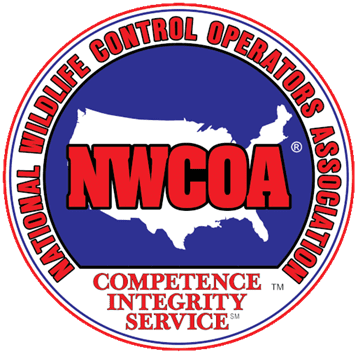 There it is! That scratching, digging or thumping sound from up in the attic. Sometimes you even hear growls or vocal cries. Even though October is the spooky time of year, this isn’t a ghost. It’s animals in the attic.
There it is! That scratching, digging or thumping sound from up in the attic. Sometimes you even hear growls or vocal cries. Even though October is the spooky time of year, this isn’t a ghost. It’s animals in the attic.
You name it, it can be up there. Raccoons, squirrels, opossum, birds, and bats. They’re all common attic invaders that can make a mess of your attic and introduce some very serious health concerns to your family. Based on the noises you hear you can gather a clue as to what type of animal has moved in.
Do you hear the noises during the day or the middle of the night? If it is during the day—especially the morning—it’s probably a squirrel. If during the night you hear thumping, and possibly growling or chattering noises, you’re likely dealing with a raccoon. On the other hand, light scurrying noises at night, anywhere in the attic or walls, and it’s probably rats or mice.
What to Expect
Regardless of what type of animal has laid claim to your attic, the results are going to be very similar. Damage to the home’s structure from chewed wood, roofing, electrical wire, and insulation. Feces and urine throughout the attic. Odor and biohazardous conditions that can harm your family or pets. These are the primary reasons to quickly identify and remove the animal before things turn from bad to worse.
When you have animals living in the attic there is a window of opportunity to address the issue before it gets out of hand. As soon as you begin to notice sounds from the attic or animal droppings on the attic floor, you need to take steps to remedy the situation.
First, by the time you’ve noticed the animal’s presence, it has likely been in the home for a while. There is probably a nest and it is probably surrounded by animal waste. The longer it is left in place the more feces and urine that will accumulate. This will be compounded if the animal produces young and they’re allowed to grow up in the safety of your attic. More animals = more waste.
Depending on the type of animal, the longer they are in the attic the more structural damage they’ll cause, as well. Rats, mice, and squirrels are notorious chewers, and they’ll gnaw continually on wood, insulation, electrical wires, and insulation. As they do so they’ll leave a trail of feces and urine behind, eventually spreading through the attic, walls, and crawlspaces. The longer they’re in the house the worse it gets. By now you get the scope of the problem.
How to Handle Animals Living in the Attic
The first and best option is to call for help. Hire a qualified nuisance animal control specialist to trap and remove the animals. Most reputable companies will clear out the animal nest, remove the waste, and either repair damage to the home or advise you on the type of contractor needed for the repairs. The sooner you call for help the sooner the problem stops.
Can you handle this yourself? To a degree, yes. In Ohio, you are legally allowed to trap most nuisance animals in your home without a nuisance wildlife license. However, if you are not familiar with Ohio’s nuisance wildlife regulations as they apply to live trapping animals and what to do with them afterward, you are probably better off leaving this to a professional.
Also, keep in mind that you’ll need to thoroughly clean up after the animal. This is far more than a mop and broom situation. Animal feces produces airborne particles when disturbed, and these particles contain disease and bacteria that cannot be safely inhaled. You’ll need protective gear, proper disinfecting sprays or foggers, and the knowledge of how to clean up the waste and any dead animals you find. This is a true biohazard that can harm your family and pets. Treat it as such.
Keeping Them Out
Once you’ve removed the animals and cleaned up the waste, you now have to ensure they’ll not be able to get back into your attic. You’ll need to inspect the roof, eaves, soffits, and surrounding area for holes, gaps, and missing exterior material that allowed them to get in. This will all need to be repaired and proper exclusion material put in place to prevent animals from tearing open the repairs to get back in. This usually involves basic carpentry and masonry skills, ladder work, and in severe situations considerable labor.
Again, if you’re not up to the task this is another good reason to hire a professional nuisance wildlife specialist. We’re familiar with this type of work and we know the common methods and practices to do the job right. You can certainly tackle it yourself—just be aware of the scope of the problem and make sure you do it right. Otherwise, you’ll have more animals living in the attic!





